català
español
english
français
Archaeology and political and cultural Catalanism
The origins of an exceptional decade, 1907-1914
World War 1, Mancommunity, IEC and Pere Bosch Gimpera
1915. A first attempt at professionalization
Catalan archaeology’s prodigious decade
Catalan archaeology in and beyond Catalonia
The great adventure in Baix Aragó
The Balearic and Pityuses Islands: the personal project of J. Colominas
The final agony of a prodigious decade
A fortuitous set of circumstances! World War 1, Mancommunity, IEC and Pere Bosch Gimpera
In 1914, a series of decisive events coincided that clarified the future for Catalan archaeology and marked the way forward for archaeological research both within Catalonia and beyond its frontiers for many years to come.
The declaration of the Catalan Mancommunity on 6 April 1914 by Enric Prat de la Riba, President since 1907 of the Barcelona Provincial Council, was the culmination of a series of projects – for example, in 1911 the agreement by the country’s four provincial councils to create a joint federation – that over the years had furnished Catalonia with progressive and coherent supra-provincial instruments of government, which were both more democratic and more participative.
The winds of change were blowing. In 1914, almost seven years after the founding of the IEC, the Barcelona Provincial Council – almost certainly due to prompting by its President, Prat de la Riba, and with the complicity of Puig i Cadafalch – set aside 2,500 pesetas of its annual budget for the ‘exploration of pre-historical sites’. Puig i Cadafalch suggested that the Historical-Archaeological Section of the IEC be consulted and requested the Section to draw up a project designed to capitalize on this potential financial support.
This was the first serious attempt to set up an archaeological research programme in Catalonia with official support and a guaranteed source of funding.
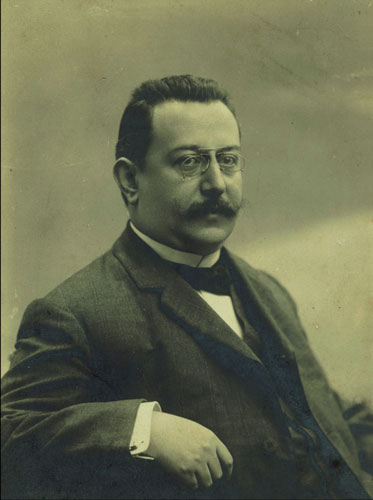
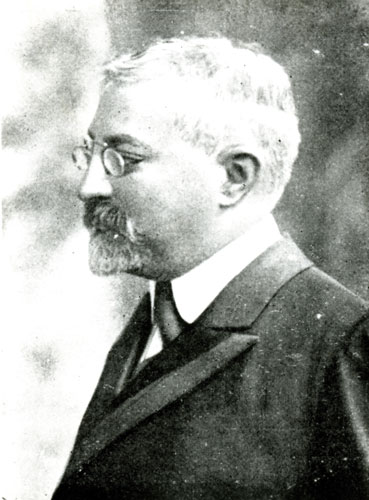
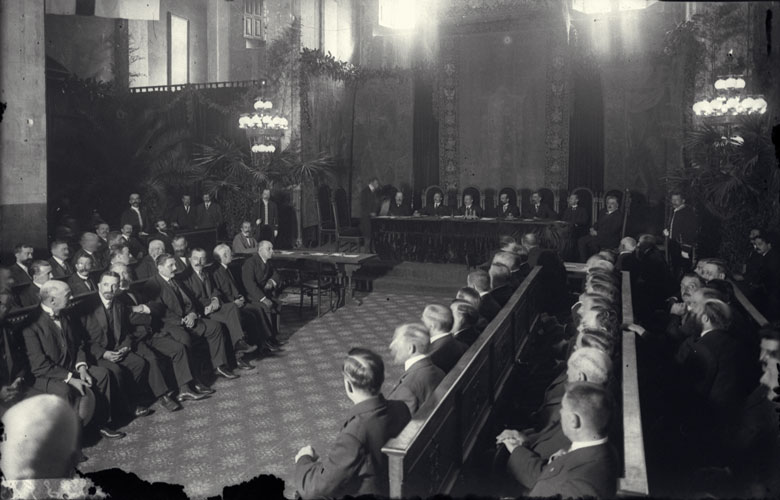
Enric Prat de la Riba (c. 1910-1915).
Barcelona Photographic Archive. Napoleón Collection.
Josep Puig i Cadafalch. Between 1917 and 1923.
MAC Photographic Archive.
Enric Prat de la Riba being proclaimed President of the Mancommunity of Catalonia in the constituent assembly held in the Saló Sant Jordi in the Palau de la Generalitat, seat of the Barcelona Provincial Government. Barcelona. 6 April 1914.
Catalonia National Archive.
Brangulí Photographic Collection.
1914. The programme to explore prehistoric sites
On 19 February 1914, the Historical-Archaeological Section of the IEC submitted to Barcelona Provincial Council a technical document drawn up by two veteran and illustrious members, Lluis Marià Vidal and Manuel Cazurro Ruiz, that discussed a number of different sites in Catalonia. Thus, with this programme in their hands, on 10 March 1914 the Public Education and Fine Art Commission approved a motion proposing that the Provincial Council offer the ‘task of exploring the prehistoric sites’ in Catalonia to the Historical-Archaeological Section of the IEC.
At the same time, an old and enthusiastic member of the IEC, Matias Pallarés Gil, from Pena-roja (Peñarroya de Tastavins, el Matarranya), convinced the Historical-Archaeological Section of the need to begin archaeological excavations in Baix Aragó, an area rich in prehistorical settlements. His pressure was so successful that the excavation campaigns in this region were to become one of the IEC’s most important archaeological research projects in the period 1914–1920.
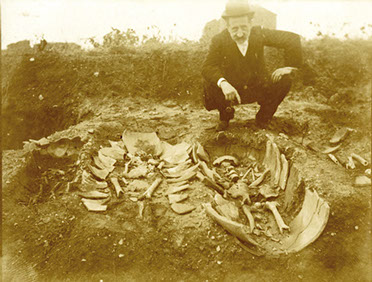
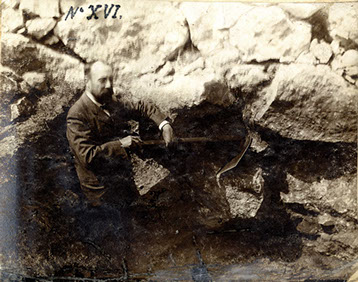
Lluís Marià Vidal at the Neapolis in Empúries. Between 1906 and 1910.
MAC Archive.
Emili Gandia Collection.
Manuel Cazurro, the technical inspector of the Empúries excavations, by the southern wall of the Neapolis. 1908.
MAC Empúries Archive.
Bosch Gimpera, a key figure
The outbreak of the First World War (1914–1918) on 28 July 1914 prompted Pere Bosch Gimpera, then a young man of just 24 and the most gifted and able Catalan archaeologist of the time, to return immediately to Spain from Germany, where he had completed his studies thanks to support from the Madrid Board for the Continuing of Scientific Research and Studies.
At first it seemed that Bosch Gimpera would choose to stay in Madrid – his fiancée lived there – and work for the Commission for Palaeontological and Prehistorical Investigations. Nevertheless, his lack of feeling for Madrid academic circles and the speed with which the Historical-Archaeological Section of the IEC proposed that he should set up and direct the archaeological excavations in Baix Aragó made up his mind for him. Bosch Gimpera decided to stay in Catalonia and so began a long and profitable relationship with the IEC; his leadership – not without, it must be said, some ups and downs – led to Catalan archaeology’s ‘prodigious decade’ of 1914–1924, much of whose scientific output is still as valid today as it was then.
Portrait of Pere Bosch Gimpera.
MAC Photographic Archive.